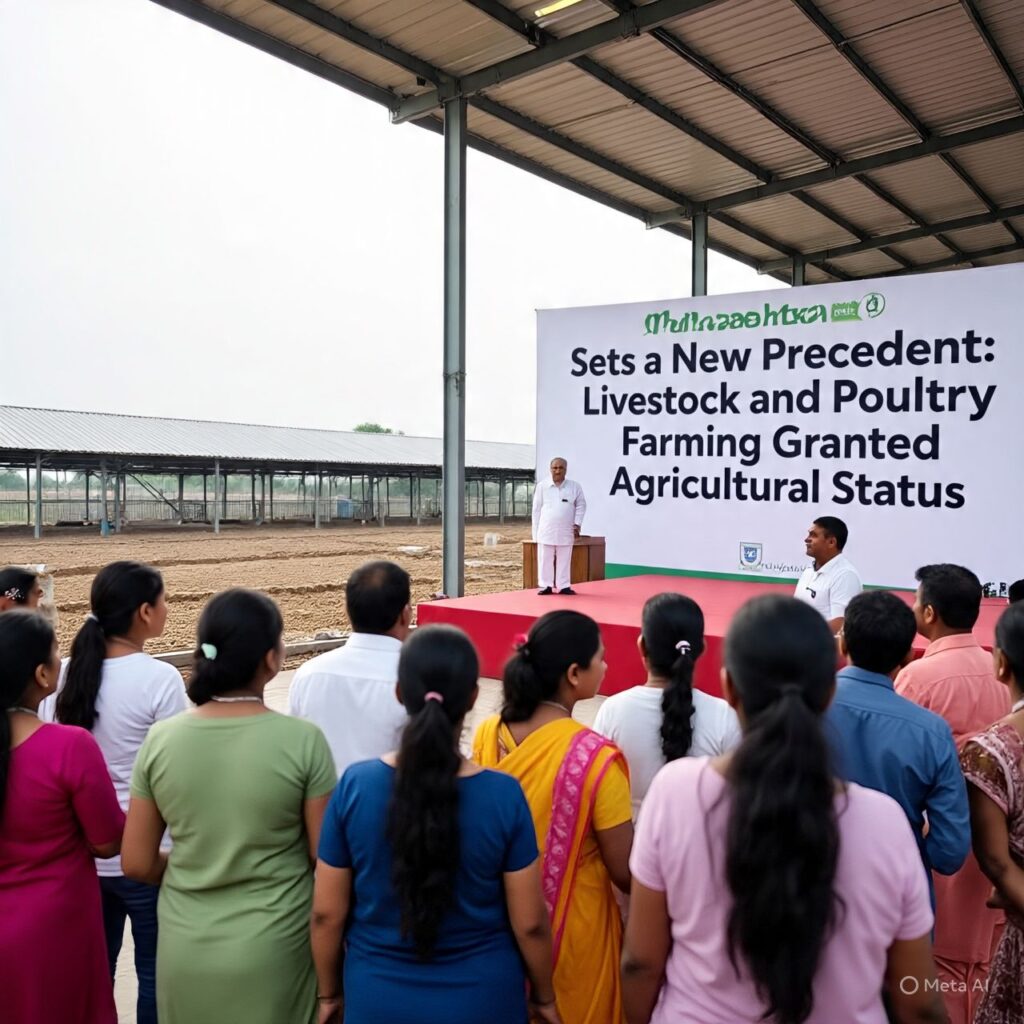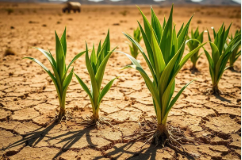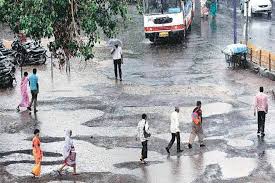
In a historic move set to transform the landscape of India’s livestock sector, the state of Maharashtra has become the first in the country to officially grant agricultural status to livestock farming. The decision, approved by the Maharashtra Cabinet on July 11 and announced in the state assembly by Minister Pankaja Munde, is expected to deliver substantial benefits to nearly 37 million livestock farmers across the state.
This bold step acknowledges the critical role that livestock plays in rural livelihoods and the broader state economy, while addressing long-standing demands to bring livestock farming under the umbrella of agriculture — ensuring that poultry farms, dairy farms, and other animal husbandry activities enjoy the same policy support as crop cultivation.
A Long-Standing Demand
Traditionally, India’s agriculture policy framework has heavily focused on crops like grains, pulses, fruits, and vegetables. Livestock and poultry farming — despite being integral to rural incomes — have often been treated as allied but separate activities. This divide has meant that livestock farmers did not automatically benefit from the subsidies, low electricity tariffs, tax rebates, and credit facilities that crop cultivators receive.
With this landmark decision, Maharashtra has taken the first major step to close that gap.
What Does Agricultural Status Mean for Livestock Farmers?
The move brings multiple direct benefits to those engaged in livestock-related activities, including:
✅ Lower Electricity Tariffs
Until now, livestock farms — whether poultry sheds, cattle sheds, or fish ponds — were categorized under commercial or ‘other agriculture’ connections, often attracting higher electricity rates than regular farms. With the new status, they will now qualify for subsidized agricultural electricity tariffs, easing operational costs significantly.
✅ Tax Relief
Livestock farmers will also benefit from lower local taxes levied by gram panchayats and other municipal bodies. Previously, these taxes were higher for commercial or industrial activities compared to agriculture.
✅ Access to Agricultural Credit
The status means livestock farmers can now access credit under the same terms as crop farmers. This includes eligibility for lower-interest agricultural loans, easier access to the Kisan Credit Card (KCC) scheme, and benefits under state-specific schemes like the Punjabrao Deshmukh Interest Relief Scheme, which offers interest subventions up to 4% for farmers.
✅ Subsidized Solar Equipment
Livestock farmers will now be eligible for subsidies to install solar-powered pumps, sheds, and other renewable energy infrastructure — just like crop farmers. This will help reduce reliance on expensive diesel generators or grid power.
A Boost for Poultry, Dairy, Fisheries, and Small Ruminants
The impact of this policy will be felt across various segments of Maharashtra’s vibrant livestock sector.
🐓 Poultry Sector
Poultry farmers, both broiler and layer, stand to gain immensely. Industry experts estimate that to meet the growing demand for chicken meat and eggs, Maharashtra needs around 25,000 broiler units, 50,000 layer farms, and hatcheries with capacities exceeding 45,000 chicks. Lower operational costs will make these units more viable and profitable, especially for small and medium-sized poultry entrepreneurs.
🐄 Dairy Sector
For dairy farmers, especially those running small to medium herds of 50-100 cows or buffaloes, the decision translates into lower power bills, reduced taxes, and easier access to affordable loans. This will help strengthen milk supply chains in the state, which is one of India’s top milk producers.
🐑 Sheep and Goat Farming
Farmers engaged in rearing sheep and goats — often the mainstay of small and marginal farmers in arid and semi-arid regions — will now get the same benefits. Farms with up to 500 sheep or goats can now operate under agricultural tariffs instead of commercial ones, reducing a major overhead cost.
🐟 Fisheries
Aquaculture and inland fisheries are also covered under the livestock umbrella, ensuring fish farmers benefit too.
Economic Impact: Revenue and Rural Prosperity
The Maharashtra government estimates that by recognizing livestock as agriculture, the sector could generate an additional ₹7,060 crore in annual income. This is significant for a state that already has a robust rural economy heavily reliant on farming and allied sectors.
More income means better livelihoods for nearly four crore livestock farmers, their families, and the countless rural workers they employ. It also strengthens local value chains for milk, meat, eggs, wool, leather, and processed animal products.
Why Now? The Push for Scientific Livestock Development
This decision aligns with recommendations from the Indian Council of Agricultural Research (ICAR) and the NITI Aayog’s 2021 report, which highlighted the urgent need for scientific livestock development to boost productivity and reduce farmers’ economic risks.
Organized and scientific livestock rearing, coupled with government support, can help farmers manage challenges like disease outbreaks, market fluctuations, and rising input costs. This policy is a step toward more resilient, sustainable livestock farming.
Sector Leaders React
Welcoming the move, Ranpal Dhanda, President of the Poultry Federation of India, called it a ‘game changer.’ He urged other states to follow Maharashtra’s lead, arguing that similar measures across India could boost domestic production, meet the rising demand for poultry and dairy products, and open up new export opportunities.
A Model for Other States?
The livestock sector contributes around 25% of India’s agricultural GDP, yet many state governments have not extended equal policy treatment to livestock farmers.
Dhanda’s comments underscore a growing sentiment in the sector: if Maharashtra can do it, why not other states? Many poultry and dairy clusters in Haryana, Punjab, Andhra Pradesh, Telangana, and Tamil Nadu are already demanding similar policy reforms.
Such a status would make livestock farming more competitive and sustainable, especially when rising feed costs and disease outbreaks pose constant challenges.
Challenges Ahead
While Maharashtra’s decision has been widely praised, experts caution that it must be backed by strong implementation. Merely granting agricultural status will not solve deep-rooted problems overnight.
Key challenges include:
- Infrastructure Gaps: Rural areas still lack adequate veterinary hospitals, cold storage, modern slaughterhouses, and dairy processing units.
- Market Linkages: Small farmers often struggle to get fair prices for milk, meat, or eggs due to exploitative middlemen.
- Credit Access: Many livestock farmers are unaware of government schemes or face paperwork hurdles to access affordable loans.
- Animal Health: Disease outbreaks like avian flu or lumpy skin disease in cattle can devastate entire herds, wiping out farmers’ income.
Addressing these issues will require coordinated efforts across departments, from agriculture to animal husbandry, power, finance, and rural development.
A Step Toward Doubling Farmers’ Income
Granting livestock farming agricultural status aligns with India’s broader goal of doubling farmers’ incomes. According to the Economic Survey, livestock farming has grown faster than crop farming in recent years and now provides a crucial secondary income stream for millions of smallholders.
Supporting this sector with lower power costs, easier credit, and better subsidies will help stabilize incomes, particularly when crop prices fluctuate due to weather, pests, or global market trends.
What Farmers Need Next
Livestock farmers say this policy is a good start but want further reforms to make it truly effective. Some of their key demands include:
- Faster approvals and single-window clearances for setting up poultry sheds, dairy farms, and fisheries.
- Training programs to adopt scientific methods in breeding, feeding, and disease management.
- Stronger veterinary services and insurance schemes to protect against livestock losses.
- Incentives for processing units to boost local value addition and reduce wastage.
- Better transport and storage infrastructure for perishable livestock products.
Conclusion: A Milestone for Rural India
By officially treating livestock as agriculture, Maharashtra has taken a bold step toward recognizing the real backbone of rural India. It acknowledges that for millions, cows, buffaloes, goats, poultry, and fish are not side businesses but the main source of livelihood.
If other states follow this model, India’s livestock sector — already among the world’s largest — can become more competitive, sustainable, and profitable for its farmers.
From lower electricity bills to better loans and tax breaks, the impact of this policy will ripple across farms and villages, empowering farmers to invest more, expand operations, and secure better incomes for their families.
For now, Maharashtra has shown the way. It is up to the rest of the country to build on this vision and ensure that livestock farmers get the respect, support, and prosperity they deserve.














